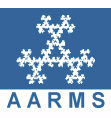 |
|
||||
[PDF]
- ELIZABETH J. BILLINGTON, The University of Queensland, Brisbane, Australia
Some interesting graph decompositions [PDF] -
Edge-disjoint graph decompositions of complete graphs and of complete multipartite graphs lie on the border of design theory and graph theory. In this talk I will survey some of the more recent results on edge-disjoint decompositions of complete multipartite graphs into subgraphs such as cycles and paths. This will include consideration of some of the properties which such decompositions may have, and some open problems in the area will also be included.
- JEREMY GRAY, Open University, Milton Keynes, MK7 6AA, UK
Mathematics, motion, and truth: the Earth goes round the Sun [PDF] -
The reality of the Earth's motion, as proclaimed by Copernicus, quickly proved contentious. Accepted by Kepler, disputed by theologians (Lutheran and Catholic alike), veiled in suggestions of mere convenience, adopted and explained by Newton as a consequence of universal gravitation, parent of the notion of force-what is involved in accepting as true that the Earth goes round the Sun? This talk traces these debates from the early 1600s to the time of Poincaré.
- MICHAEL MACKEY, McGill University, Centre for Nonlinear Dynamics
Bacterial operon dynamics: Insight from mathematical modeling [PDF] -
The regulation of dynamics in several bacterial operons has been the object of intense research, and it is now clear that mathematical modeling of these systems is able to give both qualitative and quantitative insight into experimental data on these dynamics at both the single cell and population level. This talk will discuss the nature of the bistability observed in the (inducible) lac operon, and the possible occurrence of oscillatory dynamics in the trp operon.
- SUSAN MONTGOMERY, University of Southern California, Los Angeles, CA 90089-2532, USA
Orthogonal Representations: From Groups to Hopf Algebras [PDF] -
In 1906, Frobenius and Schur proved the following basic theorem on the representation theory of finite groups: let V be an irreducible representation of the finite group G over the complex numbers C. Then there are only three possibilities:
(1) V admits a symmetric non-degenerate G-invariant bilinear form;
(2) V admits a skew-symmetric non-degenerate G-invariant bilinear form;
(3) V does not admit any non-degenerate G-invariant bilinear form.A group G is called totally orthogonal if all V are of type (1); equivalently, all representations of G are real. For example, it is known that any finite real reflection group is totally orthogonal.
In the last ten years Frobenius and Schur's result has been extended to finite dimensional Hopf algebras. In addition explicit results are known about the representations of certain Hopf algebras which may be constructed from finite groups, such as the Drinfel'd double D(G).
In this talk we will survey this recent work.
- MICHAEL SIGAL, University of Toronto, Toronto, ON, M5S 2E4
Mathematical Questions Arising from Bose-Einstein Condensation [PDF] -
Bose-Einstein condensation was predicted by Einstein in 1925 and was experimentally discovered 70 years later. This discovery was followed by a flurry of activity in the physics community with many new experiments and with attempts to construct a theory of the newly discovered state of matter. In this talk I will review some recent rigorous results in the subject and outline open problems.
- GAOYONG ZHANG, Polytechnic Institute of NYU, 6 Metrotech Center, Brooklyn, NY 11201, USA
Affine Sobolev inequalities [PDF] -
The equivalence of the sharp Sobolev inequality and the Euclidean isoperimetric inequality is an amazing connection between analysis and geometry. The connection can be strengthened. This leads to new sharp Sobolev inequalities that are affine and stronger than classical Sobolev inequalities. The crucial new geometric inequality needed is a recently established Lp affine isoperimetric inequality that is stronger than the Euclidean isoperimetric inequality. One technical tool involved is the solution of a Monge-Ampere equation-the p-Minkowski problem of convex bodies.







